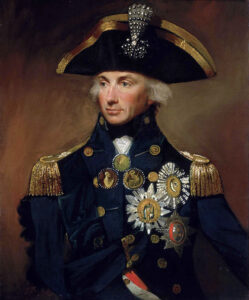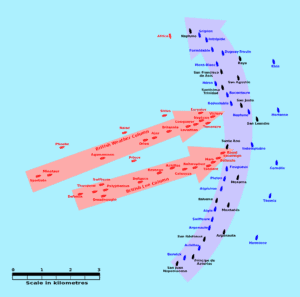Why Culture Matters
October 21, 1805. The Battle of Trafalgar off the coast of Spain pitted Napolean’s Franco-Spanish armada against the vaunted British Navy. In those days, Napoleon dominated land and territories throughout Europe, but the British were supreme on the water. The French wanted to invade England and needed to control the seas to make that possible. At Trafalgar, an epic sea battle was about to commence.

Lead by Horatio Nelson, the British Navy was well-prepared, but seriously out-numbered. The combined French and Spanish fleet had more ships, twice the number of men, and many more cannon. Commanded by the Frenchman Villeneuve, the Franco-Spanish forces seemed to have every upper-hand. Villeneuve was himself a model sailor who believed in ‘command-and-control’ leadership. Rather than share plans heading into battle, he stubbornly withheld directions from his ships’ commanding officers. Villeneuve expected that, in the midst of battle, he would direct his ships as needed.
Nelson, on the other hand, communicated in advance to his fellow offices his exact intentions and plans for the battle, for his plan was indeed audacious. Naval battles at the time normally were executed in long parallel lines of ships with their port or starboard sides facing each other, cannons aimed at the other side. In the ensuing melee, ships would blast each other apart with the larger fleet normally winning. Nelson decided that, to have any chance of success, an uncommon strategic effort must be made. With his plans being so bold, it was imperative that he share them with his fleet officers in order that they understood their path to victory.

Nelson’s plan was for the British fleet to attack in two columns, perpendicular to the Franco-Spanish fleet, with the goal of breaking their line and throwing them into complete disarray. The British fleet’s risk was that their lead vessels would be hammered during the approach. But, if successful, their would gain position and disrupt signal communication from Villeneuve to his fleet. Nelson’s plan worked perfectly. British ships successfully punched through the line and created absolute chaos.
Without clear instruction, the Franco-Spanish commanders didn’t know what to do; they weren’t leaderless – they were confused, unaware, had no plan, and no knowledge of what was expected. The battle ended in a completely lopsided win for the British; they captured or destroyed 22 ships and lost none, and suffered less than 500 casualties compared to over 4,000 for the French and Spanish. Nelson was injured and died in the battle, and his bold tactics are still heralded today.
Strategy Is Important; But Culture Matters More
The British strategy at Trafalgar is legendary and an incredible story. But if we reflect on the details, it should become apparent that for all the bravery and guile that was displayed, one of the more outstanding issues was the culture of leadership. Nelson wanted to share his plans with his officers – allowing them to listen to plans and (perhaps) even offer suggestions. Maybe his plans were challenged by others who thought it was a crazy approach. Maybe some would buy into his plans with enthusiasm. There certainly was risk in communicating this brazen plan. But consider the approach taken by his counterpart, Villeneuve.
France’s commander believed in strict control. His ships should move where and when they were instructed. He intended on being the center of all communications and leadership in the heat of battle; the necessary cog in the wheel of execution. When his communications were cutoff, the fleet was, essentially, rudderless and lost at sea. The loss was so stunning and overwhelming that, after Trafalgar, the French Empire never seriously challenged the British Navy again.
Building the Right Culture
Nelson’s leadership was key to the success of the battle plan. His willingness to communicate in advance, to share his vision and plans, prepared his ships officers to expect chaos and be prepared for the results of their actions. The “team” of ships knew what to anticipate and were able to execute clearly. The culture of effective communication and planning resoundingly beat the culture of command. Even in the Navy.
In our businesses, the need for planning and execution is a priority. So is the value and need for communication. Whether with our teams or customers, communicating our expectations helps ensure that everyone knows the plan. While rarely in ‘life and death” situations in our firms, clear and meaningful communications have a direct impact on the livelihood of our firm, the success of our projects, and the growth of our customers. Businesses can certainly die – sometimes because we’re too stubborn in our leadership practices to recognize when we need to communicate better.
Think about your own communications strategy. Are you more like Villeneuve or Nelson in your approach to leading your teams? Have you shared the vision, plans, and goals effectively so that our teams can grow stronger, more independent, and operate without micro-management? That’s the culture we want in our businesses and on our teams. And it could be the difference between sinking and swimming.
